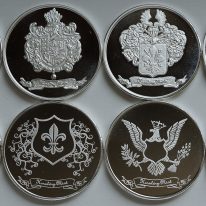Timber
Forest properties give you a double play: current income from logging sales and capital appreciation from the rising value of growing trees. Over the past 25 years, timber gained an average of 12% a year with less volatility than the Standard & Poor’s 500-stock index, according to the Hancock Timber Resource Group. Better yet, the returns had a negative correlation with stocks, bonds, and even commercial real estate. Adding a 10% timber allocation to a typical stock and bond portfolio could raise returns by 0.4% a year while reducing volatility by 1%, Hancock says.
The bulk of returns in timber comes after years of tree growth, so it isn’t an investment for short-timers or those who may need to cash out in a hurry. The homebuilding boom pushed timber prices to record levels, but the bust hasn’t values much. Waiting a year or two may provide a better buying opportunity. Investing used to be limited to large pension funds and ultra-wealthy families, but a growing class of timber investment management organizations, or TIMOs, has reduced the required minimum to several hundred thousand dollars. Expect to pay management fees of up to 2% a year plus a small slice of the gains in years the fund does well.
Rare Coins
With two well-respected rating agencies to ensure numismatic authenticity, it’s now possible to create a coin investment portfolio. Over the past 60 years, rare coins returned an average of 10% a year with volatility on par with corporate bonds and lower than stocks, according to research by Robert Brown, chief investment officer a Genworth Financial Asset Management. Coin prices typically move in the opposite direction from bonds and have little connection to stock prices. “The market has the depth and quality needed” by financial investors, says Brown, who estimates the market to be about $40 billion. And, he adds, growing interest in collecting is driving up prices, a trend that will only accelerate in coming years.
Coins are bought and sold on a negotiated basis, so expect to pay for expert advice, and don’t try to sell in a hurry. Collections need to be kept in a secure location to prevent theft and damage from excess humidity. One big knock: Collectibles aren’t eligible for the 15% capital-gains tax rate. They do, however, qualify for a 28% capital-gains tax rate.
Gold
Perhaps the oldest asset class of all, gold has typically been seen as a hedge against currency devaluation, global turmoil, and inflation. More recently, the metal has been in heavy demand in the growing markets of India and china. That pushed gold prices to over $700 an ounce earlier this year, from about $400 at the beginning of 2005. Of late, it has traded below $600, sparking renewed interest. An annual market assessment issued on Sept. 12 by GFMS, the influential London metals research firm, predicted that central banks will sell less gold and few new mines will come online over the next year, pushing prices back over $700 in 2007.
Gold can get stuck in the doldrums for years at a time. People who bought gold at $800 in 1980 are still waiting to break even. An investor in gold has to “be prepared to endure these kind of mediocre returns over long periods of time in order to enjoy the diversification benefits,” says San Francisco financial adviser Milo Benningfield. Gold has shown a strong correlation with the U.S. stock market over the past year, but the link unravels when viewed over prior decades.
International Real Estate
International real estate portfolios have outperformed both U.S. stocks and U.S. real estate for years at a time over the past few decades, according to academic research. A portfolio including U.S. and foreign real estate had returns four percentage points higher per year than stocks alone, with the same degree of volatility, according to a study in the Journal of Real Estate Portfolio Management. “Adding a small amount can have a huge impact on a portfolio,” says Veena Kutler, investment director at Mosaic Wealth Management in Bethesda, Md.
Assembling a portfolio of properties takes more resources – and travel time – than most investors can spare. Morgan Stanley, AIG Global Investment Group and others offer private international real estate investment funds to high-net-worth individuals. In the past, the funds have reported phenomenal results, but investors typically can’t withdraw their money for years.
Oil
If you were the one selling oil, maybe you wouldn’t bristle at $3-a-gallon gasoline. Even though oil is now down nearly 20% from the August high of $77 a barrel, the world is not going to shed its dependency for decades, if at all. The recent short-term drop came as hedge funds and other speculators liquidated more than half of their bets in the futures markets in just four weeks. That has left the market poised for an upturn, according to analysts at Barclays Capital. You should also own oil as a dollar hedge – it tends to gain when greenback slumps.
Investors have long been able to buy into energy partnerships, but the deals have been subject to mismanagement and other risks that have little to do with the price of oil. They also have high fees and little liquidity. That’s what makes the United States Oil Fund, a new exchange-traded fund that’s a pure play on crude, an intriguing option. Its history is short, but since the fund launched in April it has largely moved in the opposite direction from stocks. Although oil is subject to sizable daily swings, over the long term the price is closely correlated with economic growth. In a global slowdown, oil could plummet and might have a close correlation with sagging stocks at that time.






